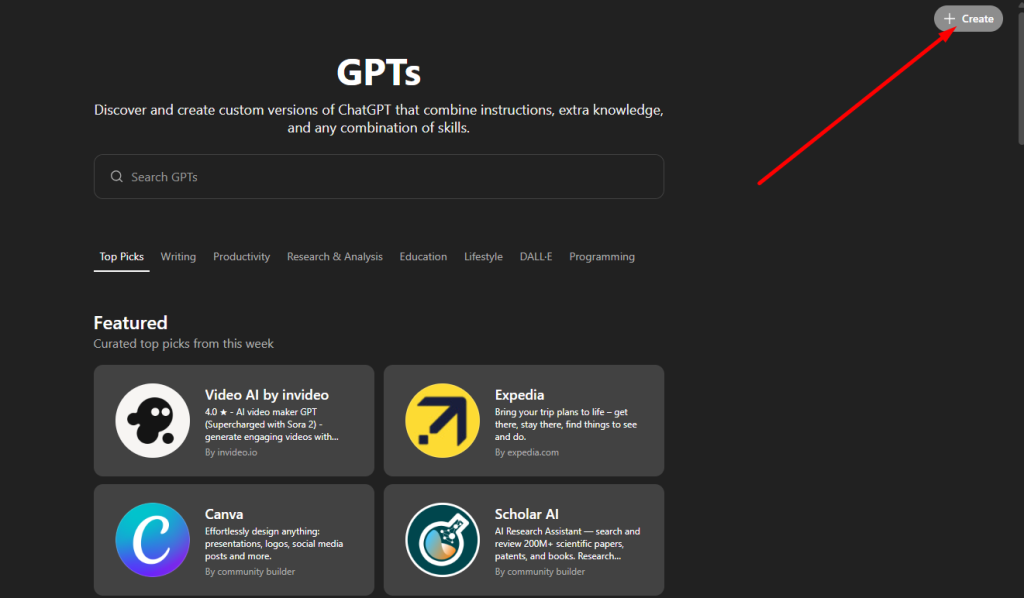Last updated on December 10th, 2025 at 09:37 am
You’re drowning in repetitive tasks.
Emails pile up.
Scheduling is a nightmare.
And you’re watching your competitors automate everything while you’re stuck doing manual labor.
Here’s the truth: Building a virtual assistant with ChatGPT isn’t rocket science. You don’t need a computer science degree. You don’t need thousands of dollars.
You need 30 minutes and the willingness to follow a process.
The global virtual assistant market was worth $4.2 billion in 2023 and is projected to hit $11.9 billion by 2030—growing at 34% annually.
Translation?
Everyone is automating. Either you get on board now, or you fall behind.
Let me show you exactly how to build your own AI assistant for free.
TL;DR: The Fast Track to Your ChatGPT Virtual Assistant
Don’t have time for the full guide? Here’s what you need:
Method 1: Zero-Code Setup (5 minutes)
- Use ChatGPT’s custom instructions for personalized responses
- Create Custom GPTs through OpenAI’s interface
- Link with Zapier for task automation across apps
Method 2: Basic API Integration (30 minutes)
- Sign up for OpenAI API ($18 free credit)
- Install Python and OpenAI library
- Run simple code to create your assistant
Method 3: No-Code Builders (10 minutes)
- Connect ChatGPT to Zapier or similar platforms
- Build workflows that trigger automated actions
- Integrate with Google Sheets, Gmail, Slack, Discord
Bottom line: You can have a working virtual assistant handling emails, scheduling, and data entry within the hour. The only question is whether you’ll actually do it.
Why Most People Fail at This (And How You Won’t)
Let’s get real about the obstacles:
“I don’t know how to code.” You don’t need to. Custom GPTs and no-code tools exist specifically for non-technical people. If you can use a smartphone, you can build this.
“It’s probably expensive.” OpenAI gives you $18 in free API credits when you sign up. That’s roughly 900,000 words of AI-generated text. Unless you’re running a Fortune 500 company, that’ll last you months.
“It won’t actually save me time.” 92% of Fortune 500 companies use OpenAI products. They’re not idiots. ChatGPT processes over 2 billion queries daily because it works. Period.
“What if it breaks or stops working?” Then you fix it. Or you rebuild it. The time you invest learning this skill pays dividends forever. This isn’t 2010—AI isn’t going away.
Method 1: Build Your Virtual Assistant Without Code (Fastest Option)
Step 1: Custom Instructions Setup (5 minutes)

Log into ChatGPT and hit your profile. Find “Customize ChatGPT” and fill in two sections:
What would you like ChatGPT to know about you? Be specific. Example:
- “I run an e-commerce business selling sustainable products”
- “My main clients are small business owners aged 30-50”
- “I need help with email responses, social media posts, and product descriptions”
How would you like ChatGPT to respond? Set your tone and style:
- “Be direct and concise. No fluff.”
- “Use bullet points when listing options”
- “Ask clarifying questions when needed”
- “Never exceed 150 words unless I ask for more”
Done. Every conversation now tailors to your business context.
Step 2: Create a Custom GPT (10 minutes)

Go to “Explore GPTs” → “Create a GPT”
OpenAI’s interface walks you through it conversationally. Tell it:
- Your assistant’s purpose (email drafting, scheduling, customer service)
- The tone it should use (professional, casual, technical)
- What it should never do (make financial decisions, share sensitive data)
Pro tip: Upload documents. Give it your brand guidelines, product catalogs, or FAQs. It’ll reference these in responses, making it genuinely useful instead of generic.
Time investment: 10 minutes to create, saves 2+ hours weekly.
Step 3: Connect with Zapier for Automation (15 minutes)
Zapier connects ChatGPT to 6,000+ apps—no coding required.
Example workflow:
- New email arrives in Gmail with specific subject line
- ChatGPT generates appropriate response
- Response saves to your Gmail drafts
- Notification sent to your Slack
Setup process:
- Create free Zapier account
- Search for “OpenAI” or “ChatGPT” integration
- Connect your OpenAI API key
- Choose trigger app (Gmail, Google Sheets, Slack, etc.)
- Define what happens next (ChatGPT generates response)
- Select final action (send email, update spreadsheet, post to Discord)
Real use cases:
- Customer service: Auto-draft responses to common questions
- Lead qualification: Analyze incoming form submissions, score leads
- Content creation: Turn blog headlines into social media posts
- Data processing: Summarize meeting notes from Google Docs
Zapier has generated $310 million in revenue (2024) precisely because this stuff works at scale.
Method 2: Use ChatGPT API with Python (For More Control)
This gives you unlimited customization but requires light coding. Don’t panic—I’ll walk you through it.
Step 1: Get Your OpenAI API Key (2 minutes)
- Create account at platform.openai.com
- Click “API Keys” in settings
- Generate new key
- Copy and save it immediately (you can’t view it again)
Cost reality: OpenAI offers $18 in free credits for new users. After that, GPT-3.5-turbo costs $0.002 per 1,000 tokens (roughly 750 words). Unless you’re processing thousands of requests daily, you’re looking at pennies per month.
Step 2: Install Python and Required Libraries (5 minutes)
Download Python from python.org (free). Open your terminal or command prompt and run:
pip install openai
That’s it. You now have the tools.
Step 3: Build Your Basic Virtual Assistant (10 minutes)
Copy this code into a file called assistant.py:
import openai
openai.api_key = 'your-api-key-here'
messages = [
{"role": "system", "content": "You are a helpful assistant specializing in email drafting and scheduling."}
]
while True:
user_input = input("You: ")
if user_input.lower() == 'quit':
break
messages.append({"role": "user", "content": user_input})
response = openai.ChatCompletion.create(
model="gpt-3.5-turbo",
messages=messages
)
reply = response.choices[0].message.content
print(f"Assistant: {reply}")
messages.append({"role": "assistant", "content": reply})
Replace 'your-api-key-here' with your actual API key.
Run it: python assistant.py
You now have a conversational assistant that remembers context throughout the conversation.
Step 4: Customize for Your Needs (5-10 minutes)
Modify the system message to fit your use case:
For customer service:
{"role": "system", "content": "You are a customer service representative for [Company Name]. Be empathetic, solve problems efficiently, and escalate to humans when necessary."}
For content creation:
{"role": "system", "content": "You are a content strategist. Generate blog outlines, social media posts, and marketing copy. Be creative but data-driven."}
For code assistance:
{"role": "system", "content": "You are a Python programming tutor. Explain concepts clearly, provide working code examples, and debug errors."}
The system message shapes everything. Get this right, and your assistant becomes genuinely valuable.
Method 3: No-Code Platforms for Non-Technical Users
Don’t want to touch Python? Fair. Here are platforms that do the heavy lifting.
Option A: Replit (Online Code Editor)
- Sign up at replit.com (free)
- Create new Python project
- Paste the code from Method 2
- Run it directly in browser
- Share link with team members
Why this works: Replit runs code in the cloud. No software installation. Works on any device. You can even turn it into a web app others can access.
Time to setup: 5 minutes
Option B: Notion AI + ChatGPT (For Documentation)
Combine Notion AI with ChatGPT for knowledge management:
- Store company documents in Notion
- Use ChatGPT to analyze and summarize
- Automate updates via Zapier
Use case: Upload meeting notes to Notion → ChatGPT generates action items → Posts to project management tool
Option C: Discord or Telegram Bots
Build a ChatGPT bot that lives in your team’s communication platform.
For Discord:
- Use discord.py library with OpenAI API
- Bot responds to messages in specific channels
- Team members interact naturally
For Telegram:
- Use python-telegram-bot library
- Create bot through BotFather
- Connect to ChatGPT API
Real benefit: Your entire team accesses the assistant without leaving their workflow.
Time to build: 20-30 minutes following tutorials on GitHub
Advanced: Integrate with Existing Tools
Google Sheets Automation
Scenario: You collect customer feedback in a Google Sheet. ChatGPT analyzes sentiment and categorizes responses automatically.
Setup:
- Connect Google Sheets to Zapier
- Trigger: New row added
- Action: Send data to ChatGPT for analysis
- Final action: Update sheet with ChatGPT’s insights
Time saved: Hours of manual data categorization
Email Assistant with Gmail
Scenario: Draft personalized responses to common inquiries.
Workflow:
- Filter incoming emails by keywords
- ChatGPT generates contextual response
- Saves to drafts for your review
- Optional: Auto-send if confidence level is high
Critical: Always review AI-generated emails before sending. Trust but verify.
CRM Integration (HubSpot, Salesforce)
ChatGPT can analyze lead data, score prospects, and suggest next actions. When connected through Zapier:
- New lead enters CRM
- ChatGPT evaluates based on your criteria
- Assigns priority score
- Notifies appropriate sales rep
Adoption stats: 70% of medium to large enterprises use virtual assistants for operational efficiency. You’re not experimenting—you’re catching up.
Common Pitfalls (And How to Avoid Them)
Mistake #1: Making Prompts Too Vague
Bad prompt: “Help me with marketing”
Good prompt: “Generate 5 social media post ideas for our new sustainable water bottle launch. Target audience is environmentally conscious millennials. Include relevant hashtags and keep posts under 280 characters.”
Specificity = quality output.
Mistake #2: Not Testing Edge Cases
Your assistant will encounter unexpected inputs. Test it with:
- Nonsensical questions
- Sensitive information requests
- Instructions outside its scope
Build in safeguards. Train it to say “I don’t have access to that information” or “I’ll need to escalate this to a human.”
Mistake #3: Ignoring Data Privacy
Never input:
- Customer credit card numbers
- Social security numbers
- Confidential business strategies
- Health records
OpenAI’s policy is clear about data usage. Treat your ChatGPT assistant like an employee—give it only the information it needs to function.
Mistake #4: Setting Unrealistic Expectations
ChatGPT is powerful but not magical. It won’t:
- Replace your entire team
- Make complex business decisions
- Handle nuanced customer complaints alone
- Write perfect code without bugs
Use it for what it’s good at: drafting, research, data processing, initial responses, idea generation.
Real-World Use Cases That Actually Work
Freelancer: Client Communication
Setup time: 10 minutes Weekly time saved: 5 hours
Automate initial client inquiries. ChatGPT drafts proposals, answers FAQs, schedules discovery calls. You review and send.
Small Business: Customer Support
Setup time: 30 minutes Monthly cost savings: $500-1000
Handle tier-1 support automatically. ChatGPT resolves common issues, provides product information, escalates complex cases.
Content Creator: Video Scripts
Setup time: 15 minutes Content output increase: 300%
Feed ChatGPT blog posts, it generates YouTube scripts. You record and edit. Triple your content without tripling your workload.
E-commerce: Product Descriptions
Setup time: 20 minutes Products processed: 50+ per hour
Upload product specs to Google Sheets. ChatGPT generates SEO-optimized descriptions. Import back to Shopify.
Proof this scales: ChatGPT reached 800 million weekly active users in 2025, doubling from 400 million just months earlier. Growth like that doesn’t happen with tools that don’t deliver.
Cost Breakdown: What You’ll Actually Spend
Free Tier Options
ChatGPT Free:
- Custom instructions
- Basic ChatGPT interactions
- Manual copy-paste workflows Cost: $0/month
OpenAI API Free Credits:
- $18 credit for new users
- ~900,000 words of generation Cost: $0 initially, then pay-as-you-go
Zapier Free:
- 100 tasks/month
- Single-step Zaps
- 15-minute update intervals Cost: $0/month
If You Scale Up
ChatGPT Plus:
- Faster responses
- Priority access
- GPT-4 access Cost: $20/month
OpenAI API (GPT-3.5-turbo):
- $0.002 per 1K tokens
- Average business uses ~$5-15/month Cost: Pay-as-you-go
Zapier Starter:
- 750 tasks/month
- Multi-step Zaps
- Premium app integrations Cost: $19.99/month
Reality check: Most solopreneurs and small businesses stay under $30/month total. That’s less than hiring a VA for one hour.
Troubleshooting: When Things Go Wrong
Problem: API Key Not Working
Solution:
- Verify you copied the entire key
- Check if billing is set up on OpenAI platform
- Ensure you’re using the correct API endpoint
Problem: ChatGPT Gives Irrelevant Responses
Solution:
- Revise your system message to be more specific
- Provide examples of desired outputs
- Use few-shot learning (give 2-3 examples before asking)
Problem: Zapier Workflow Failing
Solution:
- Check each step’s output in Zapier’s test mode
- Verify app permissions are properly granted
- Ensure data format matches what next step expects
Problem: Hitting Rate Limits
Solution:
- Implement delays between requests
- Upgrade to higher tier API access
- Cache responses to avoid redundant calls
Next Steps: What to Do Right Now
Stop reading. Start building. Here’s your action plan:
Next 5 minutes:
- Create OpenAI account
- Generate API key
- Set up custom instructions
Next 15 minutes:
- Choose one repetitive task you do daily
- Map out how ChatGPT could automate it
- Pick your method (Custom GPT, API, or Zapier)
Next 30 minutes:
- Build your first version
- Test it with real data
- Iterate based on results
This week:
- Integrate with one tool you use daily (email, calendar, CRM)
- Measure time saved
- Expand to second use case
This month:
- Share with team
- Document your processes
- Automate 3-5 repetitive workflows
The Bottom Line
Creating a virtual assistant with ChatGPT for free isn’t complicated. It’s just new. And like anything new, it feels overwhelming until you actually do it.
The virtual assistant market is growing at 34% annually because people are tired of doing tasks machines can handle. Meanwhile, ChatGPT is processing 2 billion queries daily and hit $10 billion in annual revenue because it solves real problems for real people.
You have three options:
- Keep doing everything manually and fall further behind
- Wait for someone else to build a solution (that you’ll pay premium for)
- Spend 30 minutes today and build your own assistant
The tools are free. The tutorials are everywhere. The only question is whether you’ll actually take action.
What’s it going to be?
Read also:




